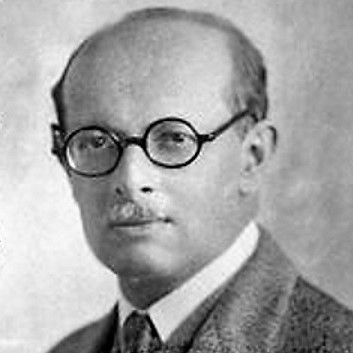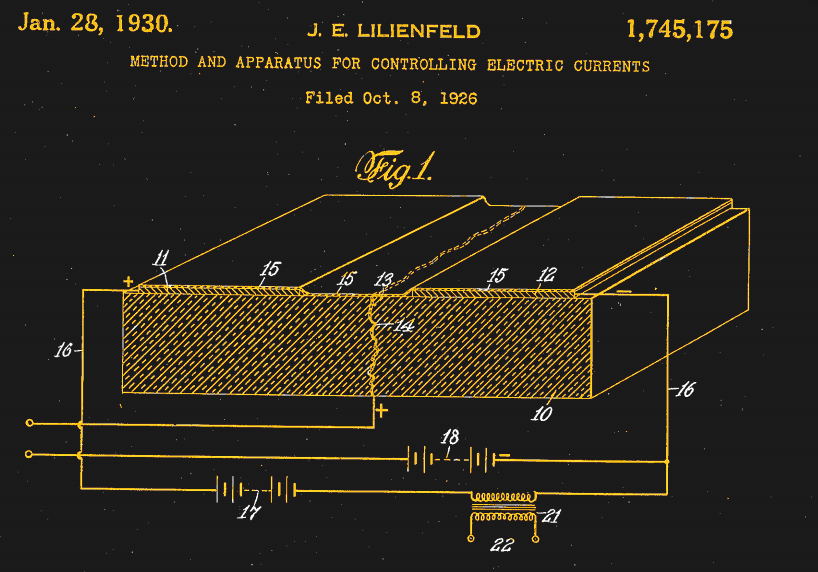Here’s a fun exercise: take a list of the 20th century’s inventions and innovations in electronics, communications, and computing. Make sure you include everything, especially the stuff we take for granted. Now, cross off everything that can’t trace its roots back to the AT&T Corporation’s research arm, the Bell Laboratories. We’d wager heavily that the list would still contain almost everything that built the electronics age: microwave communications, data networks, cellular telephone, solar cells, Unix, and, of course, the transistor.
But is that last one really true? We all know the story of Bardeen, Brattain, and Shockley, the brilliant team laboring through a blizzard in 1947 to breathe life into a scrap of germanium and wires, finally unleashing the transistor upon the world for Christmas, a gift to usher us into the age of solid state electronics. It’s not so simple, though. The quest for a replacement for the vacuum tube for switching and amplification goes back to the lab of Julius Lilienfeld, the man who conceived the first field-effect transistor in the mid-1920s.
Vacuums and Emissions

You’d expect big things from a physicist whose Ph.D. advisor was none other than Max Planck, and while Julius Lilienfeld isn’t exactly a household name, he had a long and productive career. Born in 1882 in present-day Lviv, now in Ukraine but then part of Austria-Hungary, Lilienfeld trained at the Friedrich Wilhelm University in Berlin. He earned his doctorate in physics in 1905 and took a non-tenure track professorship at Leipzig University. There he concentrated on the physics of electric discharges in a vacuum, which led directly to some of his earliest patents for medical X-ray tubes. He also worked on cryogenic gasses, leading to work with Count Ferdinand von Zeppelin and his famous dirigibles.
Clearly more of an applied physicist than a theoretician – he only achieved a “satisfactory” rating from Planck on his examination of his knowledge of Maxwell-Hertz equations – Lilienfeld was more eager to patent his ideas than publish scholarly papers on them. He traveled to the United States in 1921 to pursue patent claims on his X-ray tubes against General Electric, and to take some temporary lecturing assignments at New York University.
It was during this period that Lilienfeld first recorded his idea about semiconductor switches. How exactly he came to the conclusion that semiconductors could be used to replace vacuum tubes for switching and amplification is lost to history. It may have stemmed from his early interest in vacuum discharge and his study of field emission, the emission of electrons by electrostatic fields, as opposed to the thermionic emission of vacuum tubes. He was also interested in solid-state rectifiers, and patented an idea for one using compressed copper and sulfur powder.
Thin Films
What is clear is that in 1926, he filed for a patent on his “Method and apparatus for controlling electric currents,” which followed up a 1925 Canadian application for the same. The application described a film of “uni-directional conductivity” across two closely spaced metal electrodes. Lilienfeld suggested that copper sulfide would be a suitable compound for the film, and he described a number of methods for depositing it, including vacuum sputtering. He also describes the control of current through the thin film of copper sulfide by “applying thereto an electrostatic force” through a third electrode located between the two others. Julius Lilienfeld had described a thin-film FET perfectly, and went on to explain how such a device could be used to switch and amplify currents.

Sadly, Lilienfeld does not appear to have ever built a working prototype of his device; indeed, there’s no evidence that he ever even tried. He also never published any of his work other than as patent applications, so the world would remain ignorant of his insights for another two decades, when Bell Labs started working on what would become the transistor. In fact, Bill Shockley, always included in the official history of the birth of the transistor as the leader of the team, was in fact pointedly excluded by AT&T management from the original point-contact transistor patent application specifically because of Lilienfeld’s patents; the AT&T patent attorneys feared Shockley’s field-effect theories would cause confusion with Lilienfeld’s prior art.
While Lilienfeld missed out on credit for the first FET, he had a long and productive career. In 1926 he left academia, taking an R&D position with Ergon Research Laboratories in Massachusetts. There he invented the electrolytic capacitor in 1931. He amassed a respectable collection of patents over his career, 15 German and 60 from the US and Canada. His skills as an inventor earned him enough that his widow, Beatrice Ginsburg Lilienfeld, left a bequest to the American Physical Society to fund an annual prize in her husband’s memory. Sadly, the APS officials had no idea who Julius was, and had to look up his accomplishments before establishing the Julius Edgar Lilienfeld Prize in 1988.
It’s a shame Lilienfeld didn’t try to build one of his devices, but even if he had, it likely would not have worked exactly as described, given the materials he had available at the time. Julius Lilienfeld was clearly ahead of his time, but it’s tantalizing to think what might have been if the transistor had been invented twenty years earlier.